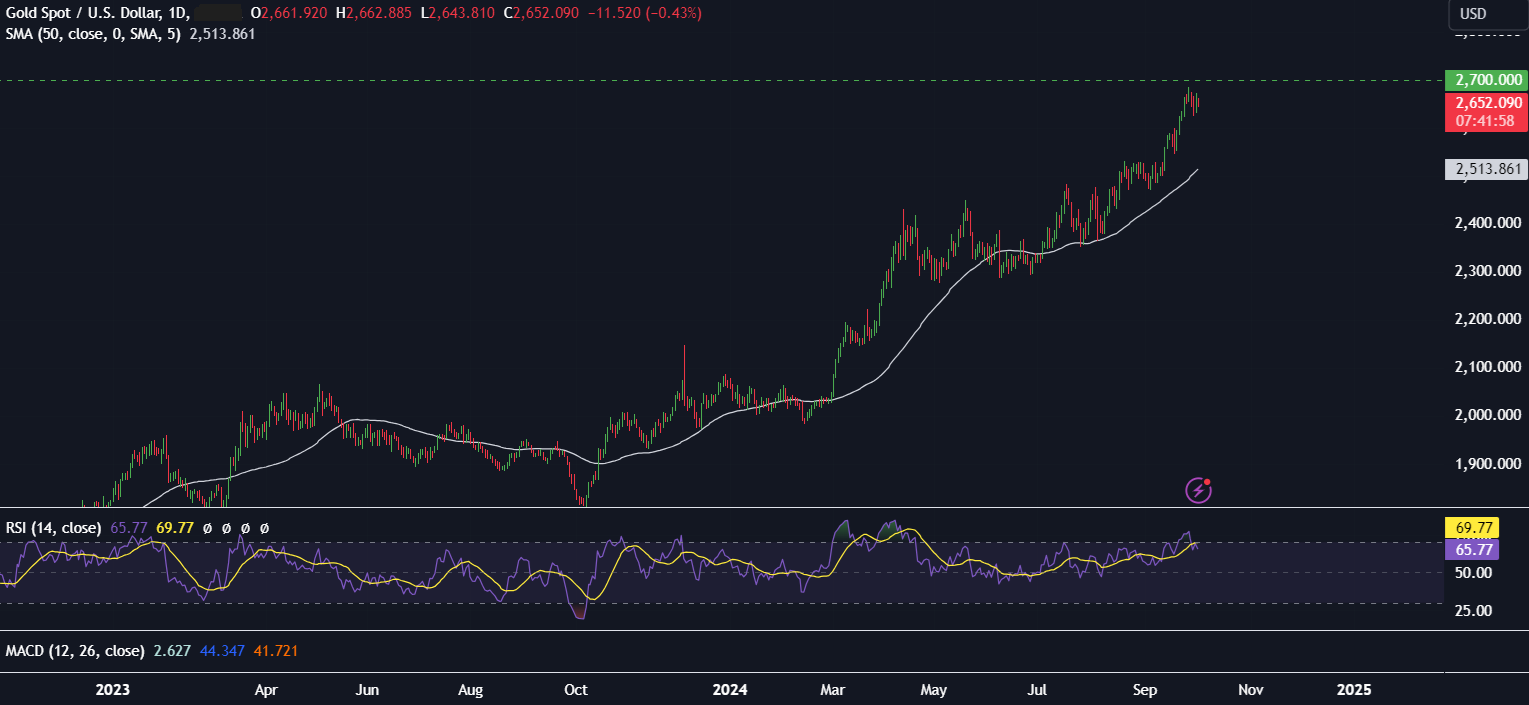Gold prices are easing lower after jumping over 1% on Tuesday on safe-haven flows as fears of a full-blown war in the Middle East escalated.

Spot gold rose 1.08% to a peak of $2673 per oz yesterday after Iran fired missiles at Israel. The markets fretted that rising tensions in the Middle East could escalate into a broader war. Gold is a safe haven asset, which means it performs well in times of geopolitical or economic uncertainty.
However, today, Gold prices are falling as an absence of further escalation means that attention is once again returning to macroeconomic factors.
Gold investors are closely watching US labour market data this week, as well as comments from various Federal Reserve officials, for more clues about the Fed’s monetary policy stance and the future path for interest rates.
Recent data suggests the US jobs market remains resilient after a small bout of weakness in July. ADP private payrolls rose by a larger-than-expected 143k in September, up from 103k in October. Meanwhile, JOLTS job openings were higher than expected at 8.1 million, above the th7.6 million forecasts.
The data comes ahead of Friday’s non-farm payroll report, which is expected to show that 146k jobs were added in October. This points to a resilient labour market, which gives the Fed more reason to cut rates by 25 basis points rather than 50 basis points in November. It would take a large increase in the unemployment rate for the Fed to lean towards a 50 bps cut now.
The data supported Federal Reserve Chair Jerome Powell’s comments earlier in the week. He suggested that the Fed would cut rates by 25 basis points in November rather than the 50 basis points that the market had been gearing towards. Following his speech, the market has lifted its expectations of a 25-basis-point cut to 66%, up from 40% less than a week ago.
Despite the market now expecting a slightly slower pace of rate cuts this year, the Fed is still set to continue loosening monetary policy. This, combined with safe-haven demand amid geopolitical uncertainty, means that the factors that helped the precious metal rise 13% in Q3, its strongest quarterly gain since 2020, remain intact.
Goldman Sachs predicts that the Gold price will rise to $2900 in early 2025, up from $2700 previously expected. While Gold is unlikely to rise in a straight line, this level looks very achievable and could be reached sooner in tensions ramp up further/ in the Middle East.
The content provided here is for informational purposes only. It is not intended as personal investment advice and does not constitute a solicitation or invitation to engage in any financial transactions, investments, or related activities. Past performance is not a reliable indicator of future results.
The financial products offered by the Company are complex and come with a high risk of losing money rapidly due to leverage. These products may not be suitable for all investors. Before engaging, you should consider whether you understand how these leveraged products work and whether you can afford the high risk of losing your money.
The Company does not accept clients from the Restricted Jurisdictions as indicated in our website/ T&C. Some services or products may not be available in your jurisdiction.
The applicable legal entity and its respective products and services depend on the client’s country of residence and the entity with which the client has established a contractual relationship during registration.




